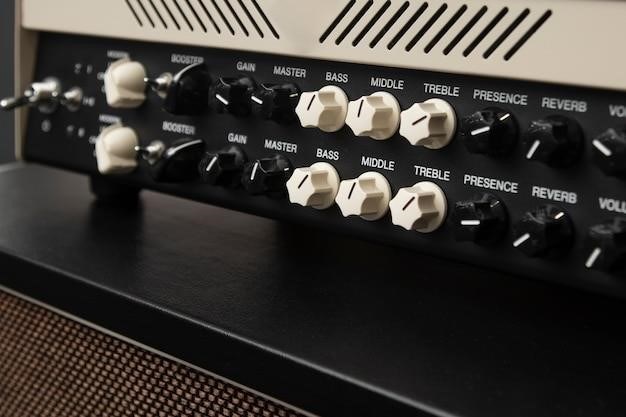Nickelodeon TV Guide⁚ Finding Your Favorite Shows
Finding your favorite Nickelodeon shows is easy! Check the official Nickelodeon website for schedules, explore third-party TV listing sites like TV24.co.uk, and utilize TV guide apps. Remember that schedules vary by region and channel (like Nickelodeon HD). Enjoy SpongeBob SquarePants and other classics!
Where to Find Nickelodeon Schedules Online
Navigating the world of Nickelodeon programming is simpler than you might think. Several online resources provide comprehensive schedules, ensuring you never miss an episode of your favorite shows. The official Nickelodeon website is a primary source, offering detailed listings for all its channels, including Nickelodeon HD and Nick Jr. These listings usually include show descriptions, air times, and sometimes even episode titles, allowing you to plan your viewing in advance. Beyond the official site, numerous third-party websites aggregate TV schedules from various networks, including Nickelodeon. These sites often offer a more streamlined interface, allowing for easy searching and filtering by date, time, and show title. Some even provide personalized recommendations based on your viewing habits. Remember to check for regional variations as schedules may differ depending on your location. Utilize the search functionality to quickly locate specific shows. Enjoy the convenience and ease of planning your Nickelodeon viewing experience online!
Official Nickelodeon Website Schedules
The official Nickelodeon website is your go-to resource for accurate and up-to-date programming information. Their online TV guide provides a detailed schedule of shows airing on all Nickelodeon channels, including the main network, Nickelodeon HD, and Nick Jr. The website’s user-friendly interface allows easy navigation, with options to filter by date, time, and show title. You can find detailed descriptions of each program, helping you decide what to watch. The site often includes additional information, such as cast details, episode synopses, and even sneak peeks of upcoming episodes. This centralized location ensures you’re accessing the most reliable scheduling data directly from the source. The official website also frequently features interactive elements, such as games and polls, enhancing your overall viewing experience. By visiting the official Nickelodeon website, you can confidently plan your viewing schedule knowing you have the most accurate and comprehensive information available.
Third-Party TV Listing Sites
Numerous third-party websites and applications offer comprehensive TV listings, including Nickelodeon’s schedule. Sites like TV24.co.uk, and many others, aggregate television schedules from various sources, providing a convenient centralized location to view what’s on. These platforms often allow users to customize their viewing preferences, saving favorite channels or shows for quick access. Many third-party sites offer additional features beyond basic scheduling, such as show synopses, cast information, and user reviews. Some may even incorporate social media integration, allowing users to share their viewing plans or discuss their favorite shows with others. While convenient, it’s crucial to verify information against the official Nickelodeon website, as schedules can sometimes change unexpectedly. These independent sites can be a valuable supplement to the official source, providing alternative ways to access and organize your Nickelodeon viewing experience. Remember to always be cautious of unofficial sources and ensure the reliability of the information before planning your viewing.
Regional Variations in Schedules
Nickelodeon’s programming schedule isn’t uniform across all regions. Time zones significantly impact airing times; a show airing at 7 PM Eastern Time will be shown later in the Pacific Time Zone. Beyond time zones, local cable providers and satellite services might also influence scheduling. Some regions may have exclusive programming not available elsewhere, resulting in variations in show availability. Even within a single time zone, differences can occur due to local broadcasting agreements. For example, an East Coast feed of Nickelodeon might feature different content compared to a West Coast feed at the same time. Therefore, when searching for specific shows, it’s essential to specify your region or location to ensure accurate scheduling information. Using a TV guide app or website that allows for location input is highly recommended. This will help you obtain the correct schedule for your specific area, preventing disappointment from missed airings of your favorite Nickelodeon programs.

Specific Show Schedules
Need to know when SpongeBob SquarePants airs? Many websites and apps provide detailed schedules for individual Nickelodeon shows, including air times, episode titles, and repeat broadcasts. Check online resources for the most up-to-date information.
SpongeBob SquarePants Airtimes
Finding the exact airtimes for SpongeBob SquarePants can be a bit of a treasure hunt, but fear not, fellow fans! The schedule for this iconic cartoon varies greatly depending on your location and the specific Nickelodeon channel you’re watching (standard or HD). The official Nickelodeon website is your best bet for the most accurate and up-to-date information on when and where new episodes, reruns, and marathons will be airing in your area. Many third-party TV guide websites and apps also list SpongeBob’s schedule, but always double-check against the official source to avoid any disappointment. Remember to factor in time zone differences if you are using a guide that does not automatically detect your location. Some websites even provide detailed episode guides, allowing you to pinpoint your favorite SpongeBob moments. Consider exploring these sites for an enhanced viewing experience, which includes a description of each episode, so you know what to expect. Happy watching!
Other Popular Nickelodeon Shows
Beyond SpongeBob SquarePants, Nickelodeon boasts a diverse lineup of beloved shows. Finding airtimes for these programs follows a similar process. Start with the official Nickelodeon website; their schedule section usually offers a comprehensive list of current shows and their broadcast times. Remember to check for both standard and HD channels, as schedules may differ. If you’re using a third-party TV guide, ensure it’s updated frequently, as schedules can change unexpectedly. Popular shows like The Loud House, Monster High, and Teenage Mutant Ninja Turtles often have dedicated fan communities online, which can sometimes provide unofficial but generally reliable scheduling information. For a more comprehensive view of Nickelodeon’s offerings, explore their website’s show pages. These often include episode guides and behind-the-scenes information, adding to the viewing experience. Don’t forget to account for regional variations in programming. Your local listings may differ from those in other areas.
Finding Schedules for Nickelodeon HD
Locating the schedule for Nickelodeon HD requires a slightly different approach than finding the standard channel’s schedule. While many online TV guides and apps will list Nickelodeon HD, the level of detail may vary. Some guides might only show a limited selection of programs, while others provide a more complete listing. Begin by checking the official Nickelodeon website; their online schedule should include programming for both standard and HD channels. If the HD channel’s schedule isn’t readily apparent, look for a channel selector or filter option to specify which channel you wish to view. Third-party TV listings often offer a similar filtering system, enabling you to refine your search and isolate Nickelodeon HD’s programming. Remember that the availability of Nickelodeon HD might depend on your television provider and region. If you encounter difficulties, contacting your cable or satellite provider directly for their channel guide is always a reliable option. This ensures you’re looking at the most accurate schedule based on your specific service package.

Using TV Guide Apps and Websites
Many apps and websites offer Nickelodeon schedules. Popular choices include TV24.co.uk and others. Check your local listings for the most accurate times. Accessing these resources provides convenient viewing information for your favorite shows.
Popular TV Guide Apps with Nickelodeon Listings
Several popular TV guide apps provide comprehensive Nickelodeon listings, making it easy to find your favorite shows. These apps often integrate with your cable or streaming service, allowing you to see what’s currently airing and what’s coming up next. Many offer personalized recommendations based on your viewing history, ensuring you don’t miss any new episodes or specials. Features such as reminders and notifications further enhance the viewing experience. Some apps also include interactive elements, allowing you to interact with other viewers or leave comments about particular shows. The user-friendly interfaces of these apps make navigating through the extensive Nickelodeon programming a breeze. Consider exploring different options to find the app that best suits your needs and preferences. While specific apps aren’t mentioned in the provided text, the existence of such apps is implied by the general discussion of using TV guide apps and websites for accessing Nickelodeon schedules. Remember to check app store reviews before downloading to ensure it meets your expectations. The availability of these apps varies by region, so ensure compatibility with your location.
Accessing Local Listings
Accessing local Nickelodeon listings is crucial for viewers to ensure they see accurate airtimes for their specific region. Cable and satellite providers often offer online program guides detailing their channel lineups, including Nickelodeon’s schedule. These guides usually allow users to input their zip code or location to filter results, providing a precise schedule tailored to their area. Many websites aggregate TV listings from various sources, offering a comprehensive view of what’s airing across multiple channels, including Nickelodeon, within a specific geographical region; These websites simplify the process of finding local programming information by providing a single, centralized resource. Some apps also offer location-based services, automatically detecting your area and displaying the correct schedule. Remember to check your cable provider’s website or app for the most accurate local Nickelodeon listings, as schedules can vary significantly depending on your location and the specific cable package you have subscribed to. Utilizing multiple resources can help confirm accuracy and ensure you don’t miss your favorite shows.



























